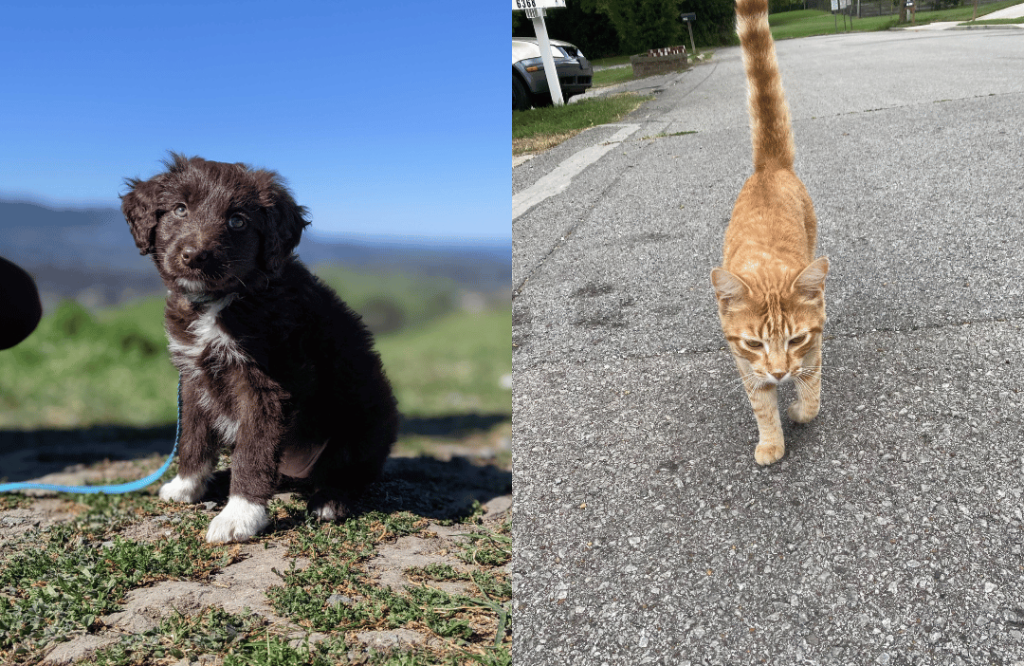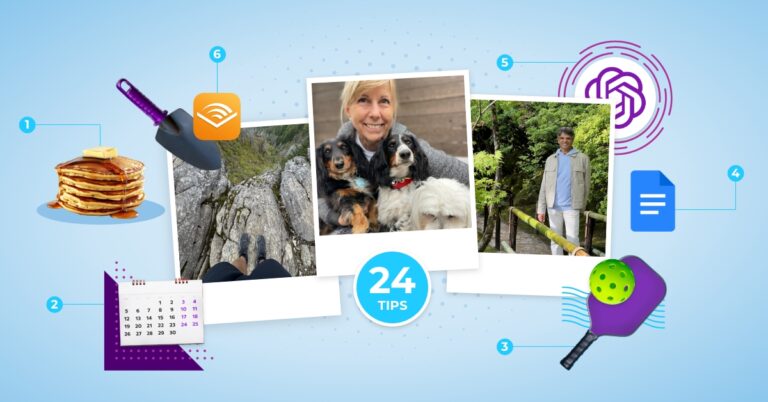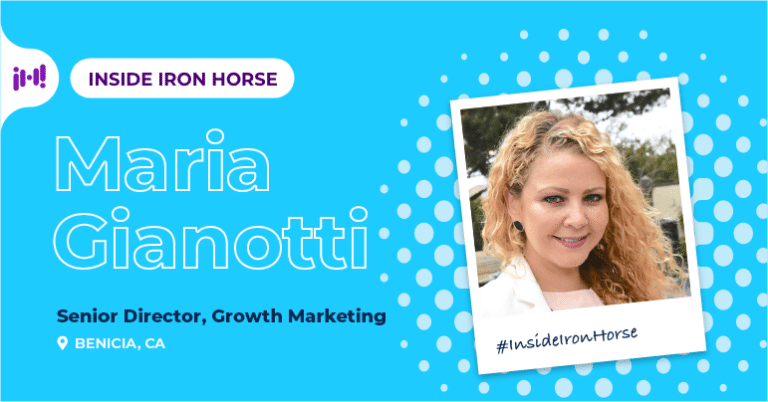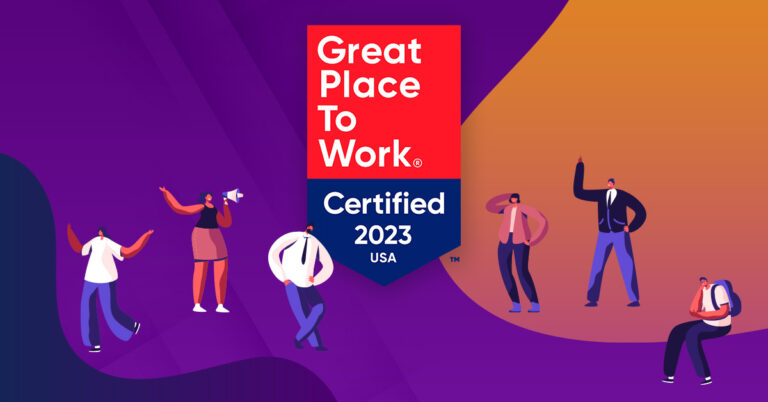When I say “company wellness,” what’s the first thing that comes to mind?
An invitation to an after-hours yoga class? More fruit in the company kitchen? “Take care of yourself” messages? Honestly, I’ve seen more than a few companies where the closest thing to “wellness” they provided was a steady stock of beer in the fridge.
We don’t mean to throw shade on all of these practices. In fact, yoga classes and eating more fruit aren’t terrible ideas. They’re just not enough on their own.
To promote authentic wellness at Iron Horse and avoid the cheesy, often ignored, and ultimately ineffective wellness traps many companies fall into, we apply these four principles to our initiatives.
1. Wellness is everyone’s responsibility.
We’re asking for, or at least encouraging, a lot of individual behavior change when we promote wellness. What about our own role as a company? It’s one thing to tell your employees they don’t need to stress so much about things, and another to organize and manage your company in a way that limits that kind of stress.
This takes time and commitment from the top down. Getting buy-in from your executive team early and making the case as to why a robust wellness program is an important part of team culture is key. And it matters. While exact ROI is traditionally hard to measure for a wellness program, the WHO estimates 12 billion working days are lost every year due to depression and anxiety, globally. That’s a total cost of US$ 1 trillion per year in lost productivity. To put it simply, happier, more fulfilled employees are good for business.
It’s an ongoing effort and definitely not something that happens overnight. We aren’t perfect, but we’re working daily to create a culture and organization that truly values its people’s wellness.
2. Wellness has to be accessible.
There are two sides to this principle. You have to either create programs that everyone will be able to participate in or create just-as-good alternatives! For example, not everyone is interested in cooking at Iron Horse, so we provided plenty of smoothie recipes during our nutrition challenge.
The other side of accessibility acknowledges that companies shouldn’t be telling their people what to do outside of work. You have a wellness program—great! It’s a yoga class after hours? Boo. The best programs don’t take up team members’ personal time but use company time. That’s why we scheduled most of our training and activities on Friday afternoons.
3. Wellness is multi-faceted.
A lot of companies fixate on physical wellness programs, but not quite so many promote the other, less tangible, or results-driven aspects.
A solitary yoga class isn’t going to make anyone feel better. More fruit doesn’t change anything on its own.
That’s why we’ve taken a multi-faceted approach to our wellness initiatives. In the last year or so, we’ve launched programs around physical, nutritional, emotional, and financial wellness, with plans for more. Here’s what we did.
Wellness encompasses 8 mutually interdependent dimensions: physical, intellectual, emotional, social, spiritual, vocational, financial, and environmental. – The National Institutes of Health (NIH)
Physical wellness.
We wanted to be very careful to keep these programs positive and shame-free. In 2021, we implemented our first-step challenge, which was a wild success. So, in 2022, we decided to bring the challenge back in February and August.
The first month-long challenge was individual. Shoutout to Ezra for walking ~170 miles and Darren for walking 157 miles! We chose teams to compete in the second challenge. Kudos to the We Thought They Said Rum team for a total of 296,906 steps! The third challenge was also in teams but incorporated more than just steps. We included some mini-challenges that encouraged people to take a break from work and walk while talking to a coworker and snap photos while out on their walks.
You can bet we’ll see the step challenge make a return in 2023.
Nutritional wellness.
Physical wellness wouldn’t be complete without a nutrition component. We launched this challenge with a workshop by a certified nutritionist, who gave us all tips for plate proportions, healthy snacks, and tasty alternatives to less-than-great-for-you favorites.
For the rest of the month, we shared four recipes per week—two meals and two smoothies—and asked participants to upload photos if they made any of them. Anyone who made one of the healthy recipes (or any modified version of it) and shared a photo of the final result won a submission in the raffle. Shoutout to Maddie for making nearly every recipe!
We learned a lot that month! Who knew you could put cauliflower in a smoothie or replace sour cream with unsweetened greek yogurt?
Emotional wellness.
We didn’t shy away from emotional health, which is arguably one of the most crucial facets of wellness. Team members competed by going a whole day without social media, drinking eight cups of water daily, reading 30 minutes, organizing their workspaces, meditating, journaling, and doing acts of kindness for others. The key was to offer a wide variety of tasks that would make the challenge as accessible as possible to everyone.
With so many different ways to earn points, it could have easily gotten complicated, but we were able to configure our fitness app to let people mark off their completed challenges each day. To keep connection through a largely individual competition, we encouraged participants to post photos in our wellness slack channel. A happy by-product was team members getting to know each other completely out of the context of work.
“Globally, an estimated 12 billion working days are lost every year to depression and anxiety at a cost of US$ 1 trillion per year in lost productivity.” – The World Health Organization
Financial wellness.
Our financial wellness program was the only initiative we did not turn into a competition, as we wanted to focus solely on education. Our goal was to help our employees take full advantage of the financial resources available to them, empowering them to take a more active role in their finances. We called these educational sessions “Financial Fitness Fridays.”
Over the month, we invited the company to join four financial informational sessions taught by both third parties and internal folks. The first session explored a financial planning platform our employees have access to and showed us how to easily budget, organize payments, and plan for our futures. The second session dove into the company 401(k) plan and showed us how to get started, enjoy company matching, and manage our plans. The third session covered all the financial resources offered by Iron Horse, while the fourth session featured two of our own with a primer on investing in stocks and crypto.

4. Finally, wellness needs to be fun.
Do you want people to join your wellness program? It’s got to be fun. We’re busy. We’re tired. If your wellness program is more of a chore than a breath of fresh air, people won’t join it and won’t participate.
That’s why we love turning them into challenges and competitions! Iron Horse team members love a competition.
The Iron Horse insight.
Start small. If you want to start a wellness program that encompasses all the facets listed above, make sure to start with something manageable, or you’ll burn out before reaching your objectives. Try setting up a simple step program to build camaraderie and get your team used to the idea. Add some competition and provide good prizes and we’re sure you’ll see results!



